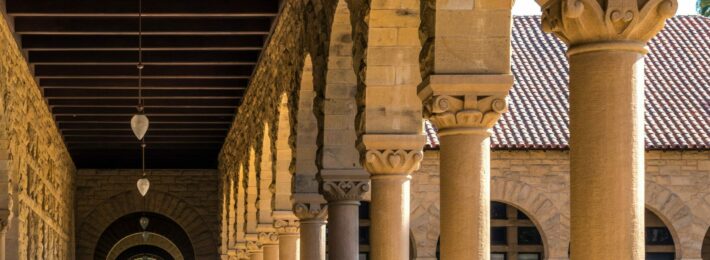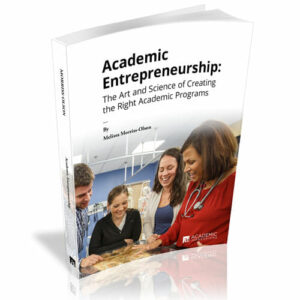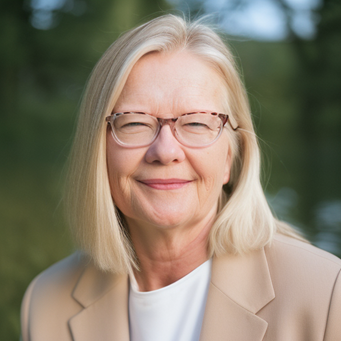
Related Articles:
Feasibility Checklist: The Science of Bringing New Academic Programs to Life
Financial Modeling for New Academic Programs
The challenges facing higher education in recent times are well documented. Never has it been so critical for colleges and universities to adopt an entrepreneurial mindset. Especially for resource-constrained institutions (which is most of us), traditional financial management approaches such as resource prioritization and/or cutting one’s way to sustainability are no longer sufficient long term solutions. In this current context, successful institutions are outward-looking and have developed a discipline around driving entrepreneurial growth in ways that live and further leverage the mission. This is what having an entrepreneurial mindset is all about; from my experience, nurturing such a mindset at the institutional level requires both art (intuition, active listening, and keen attention to opportunities) and science (rigorous discipline and process).
I consider myself an academic entrepreneur. Throughout my career in higher education, I have been focused on looking outward and asking key questions such as “How can we do this differently?”; “What do we do really well that might be leveraged in new and unique ways?”; and “What market opportunities exist that we are uniquely equipped to meet?”
At Bay Path University where I serve as Provost, we undertake vision planning every three years and as part of this process, we routinely ask these questions as we review new opportunities that are both mission-centric and entrepreneurial. Through this process, we have launched more than 20 new graduate programs over the past decade, we have established the American Women’s College (AWC), the first women’s only fully online program in the country and we have initiated several curricular innovations that powerfully leverage our mission such as our Women as Empowered Learners and Leaders (WELL) program, a multi-dimensional learning experience that weaves together academic coursework, leadership skills, career preparation, and community service.
At Bay Path, we like to say there is no bad idea. However, there are several criteria that we consider when evaluating whether to move forward with a new academic program or initiative:
- Mission and opportunity
- Operational feasibility
- Market niche
- Internal support
- Failure potential vs. opportunity assessment
1. Mission and Opportunity
With limited resources, it is critical to consider all opportunities in light of mission:
- What impact will this new program have on mission?
- Will this program limit or enhance our mission impact and in what way?
- What will happen if we do not do this?
“Mission creep” (i.e., diverting precious resources to efforts that detract from our mission) is just as important a concern as is missing opportunities that will enable us to expand and strengthen our mission impact. As a single gender focused institution, the women’s mission is always front of mind when considering new opportunities even in areas where we will enroll women and men.
For example, when we developed the MFA in Creative Nonfiction Writing program, one of only a handful of programs of this type offered fully online, we included several creative nonfiction forms that have particular appeal for women—stories of the spiritual journey, food and travel writing, health and wellness narratives, women’s stories, narrative journalism, the personal essay, and the memoir. While discussions about mission tend to rely more heavily on intuition (the ‘art’) and historical precedence at most institutions, bringing market data analysis (the “science”) into consideration helped us identify a financially smart opportunity that is leveraging our mission in new and powerful ways.
2. Operational Feasibility
Equally important are the questions that help us assess whether we have the operational capacity to undertake this new effort and do it well:
- What does success look like?
- What will it take to be successful?
- How long will it take to be successful?
- What existing institutional assets might we draw upon to launch this effort?
For every new academic program we develop, we conduct an extensive feasibility study that includes a four year financial proforma. The proforma incorporates assumptions about enrollment, revenue, personnel and operating expenses and allows us to understand what net profit margin is required for the program to be financially viable, within what time frame and at what cost.
Finding ways to tap into existing resources is an important consideration. For example, because we have an extensive infrastructure in place to support online learning, we always ask whether a new program might be delivered online knowing that the support costs are already built into the budget. The rigorous discipline we have established around new program development through the feasibility study and proforma process (the “science”) has proven invaluable in understanding what it will truly take to successfully launch a new initiative.
3. Market Niche
A third key set of criteria involves assessing whether we can develop a market niche in a particular area:
- What is the market context?
- Do we have the capability to carve out a niche?
- Does this niche make sense for us and is it attainable?
- Do we have a built-in market?
Through the feasibility study, extensive information is gathered about the market context including a full competitive scan. For example, when we developed the American Women’s College, we knew that a majority of adult learners are women. In developing this country’s first fully online degree completion program for women only, we leveraged our historic expertise in educating women through our One-Day-A-Week-Saturday Program for Adult Women and filled a niche by delivering a convenient, affordable, women-centric means for adult women to get their college degree entirely online.
Quite honestly, many of our best new program ideas have emerged initially as a “gut instinct” (the “art”). But because the market niche questions are an important element in the feasibility study, we have a process (the “science”) in place to ensure that our gut instincts are well vetted and we avoid an overreliance on the “if we build it, they will come” trap.
4. Internal Support
In considering new program possibilities, I try to gauge the initial level of internal support as early in the process as possible. Key questions include:
- Do we have a champion(s) for this program?
- What role might this champion play in the development, launch and maintenance of the program?
- What benefits and limitations are associated with this champion?
- Is anyone likely to resist this initiative and if so, for what reasons?
Particularly in an academic environment, it is important to understand how a new program might fit within the political context of the institution. The success of our recently launched fully online master’s degree in accounting is due in no small measure to the fact that the program was developed and launched by our chair of the undergraduate accounting program, an individual who has tremendous respect among her colleagues and extensive professional contacts and networks within our region.
Being disciplined in asking these key questions (the “science”) is one more way to ensure you are not missing something that could impact the success of the new program launch. At the same time, most provosts who have been in the role for a while have a keen sixth sense (the “art”) about the political context and what internal factors might facilitate or doom a potential new program.
5. Failure Potential versus Opportunity Assessment
A fifth consideration involves assessing the potential for failure against the potential for success. Questions that help us assess both the probability and impact of failure include:
- What might go wrong?
- How likely is it that this will happen?
- If this happens, what is the impact?
- How much failure can we tolerate and for how long?
At the same time, we try to assess the potential demand for the program as well as what broader opportunities this program might provide for the institution. While not a perfect science, having both aspects on the radar as we consider new program possibilities contributes to better decision making and reduces the potential for myopic thinking.
From my experience, both the art and the science are critical for ensuring financially sound, entrepreneurial growth. Having a rigorous process that draws on both allows you to avoid the opposite dangers of getting caught in “analysis paralysis” (always examining the data and never reaching a decision) or making avoidable errors because you are flying by the seat of your pants.
Such a discipline also helps you move from “dream it—build it” to calculating what it will actually take to be successful. At the end of the day, dreaming and calculating do not need to be mutually exclusive pursuits. I believe that true entrepreneurial thinking when applied in an academic context can help institutions fully tap their mission-centric, innate potential. And when art and science are applied in tandem, an entrepreneurial mindset can contribute to a deepened commitment to the educational mission of the institution.
Get Melissa Morriss-Olson’s Book

Academic Entrepreneurship walks you through strategies for identifying, creating, and growing the right academic programs – both the mindset needed and the practical steps. Included in the book are templates, samples, worksheets, and case studies. Find out more.
Join Melissa Morriss-Olson at Our Innovative Strategies for Developing Academic Programs Conference


